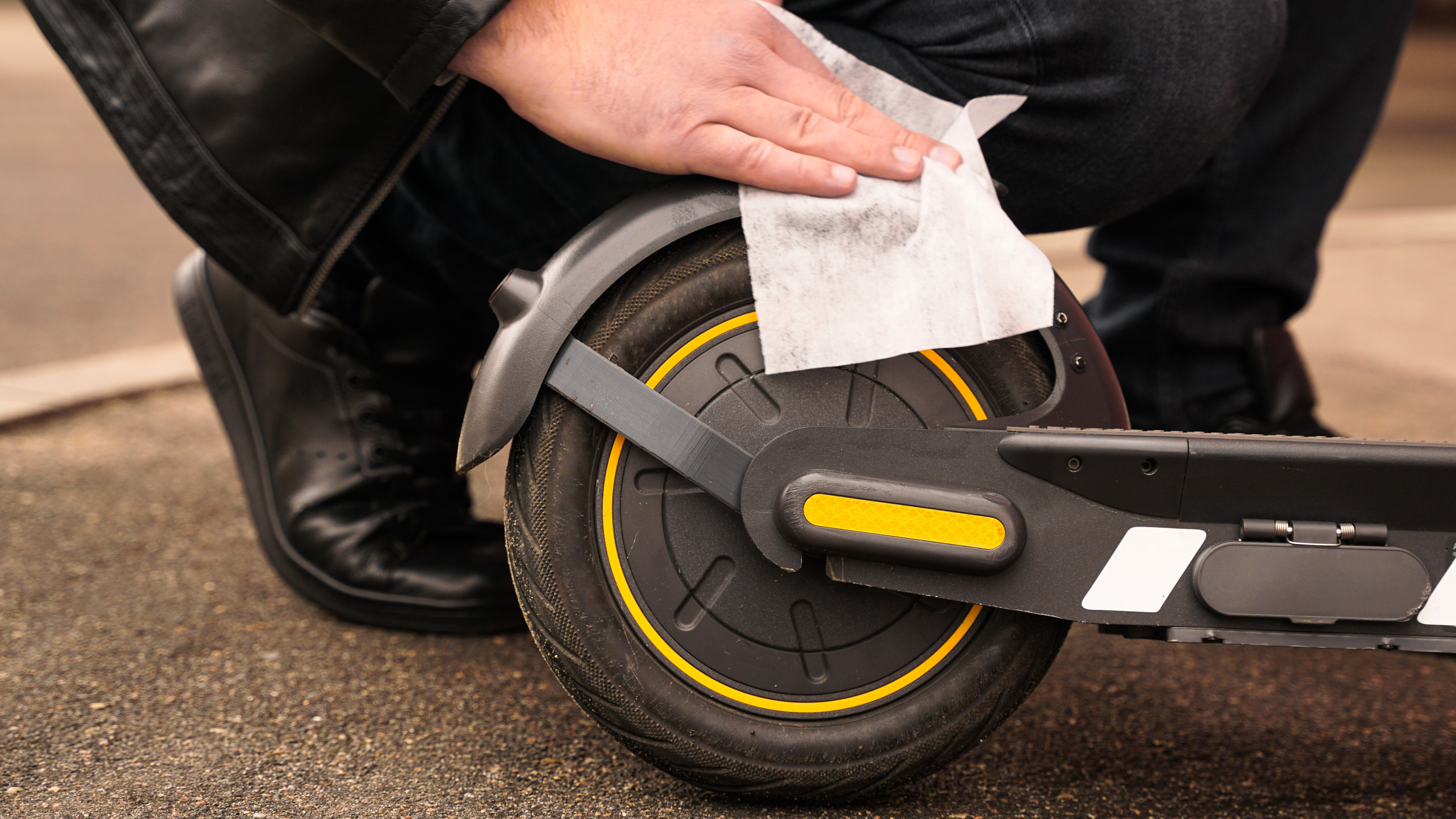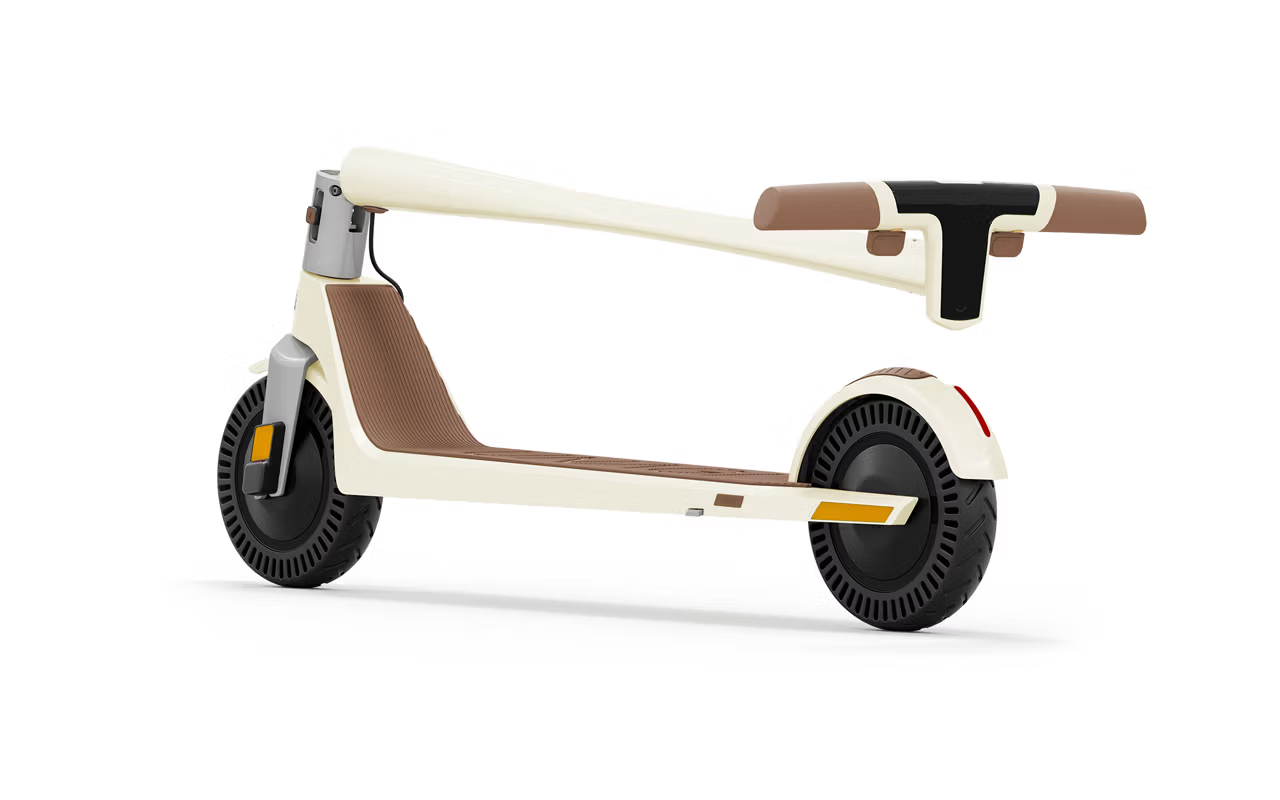Micromobility is here to stay, and it’s changing how we experience urban life for the better. With Unagi’s membership program, you can enjoy all the benefits of a top-tier electric scooter without the sky-high price of ownership or the inconvenience of ride-sharing.
Have you discovered the sheer freedom of e-scooter ownership yet? Imagine hopping onto your scooter and going wherever you choose in a fraction of the time it would take in a car or with public transport.
Electric scooters give people a more sustainable way to travel, costing less than car ownership. There's no doubt that you can benefit a great deal from investing in an e-scooter, but like any vehicle, it requires regular maintenance to run smoothly.
A daily, weekly, and monthly electric scooter maintenance checklist ensures that your scooter will continue running at peak performance. It also helps you identify potential issues before they become major problems.
In this guide, you'll learn about the importance of preventive maintenance and how to create your own electric scooter maintenance checklist.
Common Things That Can Go Wrong With Electric Scooters

Despite some negative press, electric scooters are relatively safe, and accidents aren't as common as you might think.
Research shows that e-scooter accidents are more likely to occur at weekends and after drinking alcohol, showing that human error, and not the scooter's themselves are mostly to blame (BMJ).
Aside from errors, any issues with the e-scooter can cause an accident, so it's essential to perform regular maintenance and identify any problems.
Here are the most common things that can go wrong with scooters.
Battery-related issues
The battery is an integral component of any e-scooter and must always be in peak condition. There's usually a fault when a battery fails to hold a charge or doesn't charge properly.
Understanding how to preserve your scooter's battery life can make a big difference, but problems can still occur, even if you take care of it.
Motor malfunctions
The electric motor powers the scooter's movement, but worn-out components, electrical faults, and overheating can cause serious issues. You might notice the scooter doesn't move or stalls when riding it.
Brake problems
Brake-related issues can compromise rider safety and should always be in top condition. If your brakes make squeaking and grinding noises and are less effective at stopping, you'll need to repair or replace them.
Tire and wheel issues
Electric scooters rely on tires and wheels for smooth and safe rides. Common problems include punctures, flats, tire wear, and wheel misalignment. These issues can occur due to debris on the road, improper tire maintenance, or hitting potholes and curbs.
Electrical system faults
Electric scooters have complex electrical systems that can experience various faults. Regular maintenance helps you identify issues with the wiring, connectors, and other components that might impact the scooter's overall performance.
Loose or damaged parts
Scooter components can become loose with regular use and vibrations, leading to rattling sounds or reduced stability. Physical damage to the scooter's frame, handlebars, or fenders can occur from accidents or improper storage.
So, now you know what problems you might see with an electric scooter; it's time to reveal the checklist. Following our maintenance schedule ensures you'll notice any issues and fix them before they compromise your scooter - and safety.

Daily Maintenance Checklist
If you're using your scooter for commuting, or city riding, it's best to give it a general check daily. Not only does this ensure smooth operation, but it also keeps your scooter looking great.
By following this daily maintenance checklist regularly, the scooter will run smoothly and ensure it remains in tip-top condition.
Brake checks
Before setting off on your journey, you'll need to check the following components of your brakes:
- Brake Pads
- Brake Caliper
- Brake Lever
Ensure the brakes provide adequate stopping force and look for visible signs of damage, such as worn pads, loose cables, or low resistance in the brake lever.
If there are any issues, you should be able to follow your scooter's manual, but it's a good idea to seek help if you're unsure of how to fix the brakes.
Battery checks
Next, test the battery to make sure it can hold a charge and will power the scooter. Sometimes, the battery reaches a full charge but is unable to hold it, which means you might need a replacement.
You should also give a scooter a wipe with a damp cloth and then dry it afterward to ensure it's free of grime and debris.
Inspect the lights
Inspecting the lights and turn signals to make sure they are working correctly ensures safe riding at night. The lights should be bright enough to notice other road users and react quickly to hazards.
Weekly Maintenance Checklist
Moving on to the weekly maintenance checklist, which is more intense than the daily checks but absolutely necessary. Set some time each week to look at your e-scooter, and you'll have peace of mind that nothing will go wrong.
Check for wear and tear
Wear and tear can be anything from poor tire pressure to loose bolts. Starting with a general check allows you to identify any components that need further examination.
Check the tires, brakes, and handlebar for any signs of wear or damage, and use a pressure gauge to ensure your tires are at the advised limit. If they're not, you'll need to arrange a replacement immediately.
Inspect your lights
It's also important to inspect your scooter's lights and ensure they work to their maximum capacity. Any broken lights should be replaced immediately to ensure you're safe on the road, and you can give them a wipe with a microfibre cloth before setting off too.
Clean your scooter
Cleaning your scooter once a week keeps it in excellent condition and prolongs its lifespan. The metal components will always be vulnerable to rust, but regular cleaning protects all of the parts, saving you time and money in the future.
You'll Need:
- Microfibre cloths
- A bucket of warm water
- Scooter cleaning solution (mild soap is fine)
- A water spray bottle
- Toothbrush/Soft Brush
With the microfibre cloth, gently remove visible dirt and debris, and pay extra attention to under the deck and other less noticeable areas, being extra careful of the internal components.
Once you clean the scooter body, you can use the toothbrush to scrub away stubborn stains gently.
Remember, your scooter will be more vulnerable if you take it out in extreme temperatures, so drying it after cleaning is essential.
Lubricate the scooter
The best electric scooters often have moving metal parts, and you'll need to ensure they receive proper maintenance too. Check your owner's manual to see whether these components require regular lubrication.
Remember to check whether the lubricant is suitable for your electric scooter.
Monthly Maintenance Checklist

Monthly checkups are vital because this is when you often look at other areas of the scooter that you might otherwise ignore. Performing these tasks monthly doesn't just keep your scooter running smoothly; it can also save your life.
Recheck the brakes
Yes, checking the brakes is an ongoing task because the brakes are central to a safe ride. If you've used your scooter frequently over the past month, you'll need to ensure the cables are still in place, as they might need tightening.
The manual should tell you how and you'll probably need some basic tools, but you can also take the scooter to a professional if you're unsure how to tighten the cables.
Brakes can also fall victim to rust and debris, but regular cleaning should ensure they continue to function correctly.
Battery connections
Your electric scooter battery is also something you can't afford to ignore. Common problems include the battery not charging or losing battery life quickly, so it's best to use a voltmeter to evaluate your battery pack each month.
In some cases, you might need to replace it, but a new battery will ensure you get more use out of your scooter, and you can take steps to avoid the problem occurring again.
Charging the battery regularly is always a good idea, but never let it go under 50% capacity.
Check the nuts and bolts
Finally, check all nuts, bolts, and screws for tightness every month to avoid unexpected mishaps while riding your scooter.
If you ride over bumpy roads, the vibration could cause the bolts and nuts to loosen, so even if you think everything is OK, it's always best to check.
Top Electric Scooter Maintenance Tips

Maintaining a scooter doesn't have to be a headache, especially considering how much easier it is than looking after a car. If you want to get the most out of your scooter and enjoy everything the lifestyle offers, following our top tips will help.
Choose an e-scooter that won't let you down
There's a big difference between an affordable e-scooter and a cheap one. Make sure you choose a model with convenience, portability, and excellent ratings.
For example, Unagi's Model One Voyager is the newest in the line of scooters that showed these modes of transportation can be as sleek and sexy as a car.
With one-click folding features and double the range of its predecessor, the Model One Voyager will become your new best friend.
Better still, you don't have to pay for it outright because the all-access subscription offers unlimited access to the scooter, insurance, and regular services for a low monthly fee.
Clean your scooter regularly
Cleaning your scooter regularly will make a massive difference to its lifespan - but many people forget to prioritize it. If you ride over wet surfaces or in urban areas, the scooter will inevitably accumulate a lot of dirt and debris over time.
Make sure you dry the scooter thoroughly after washing it to ensure it doesn't begin to accumulate rust.
Check your warranty
When you first receive your e-scooter, you'll have protection for an extended period, which means should anything go wrong, the manufacturer will replace the scooter.
However, warranties also have strict terms attached to them, and you need to be aware of your responsibilities.
For example, the warranty will be void if you fail to regularly inspect the scooter and prevent rust. Another example is if the scooter stays outside instead of being stored safely in a dry place.
Take your scooter for an annual inspection
While our inspection checklist covers all the basics, you should still take the scooter for yearly checkups because a professional will know the underlying issues to watch out for.
It might also be a term of your warranty, and ensuring you look after it will give you peace of mind that it's safe for road use.

The Bottom Line
Electric scooter maintenance is part of responsible ownership and is central to ensuring everyone continues enjoying the convenience and portability of e-scooters.
Regularly checking things like battery condition, brakes, handlebar controls, and lights, as well as changing the oil and checking the tires, are all key elements in keeping your electric scooter healthy and others safe on the road.
Scooters will remain a worthy alternative to cars and public transport if everyone performs regular maintenance. What could be better?

Stay current with the latest U.S. electric scooter laws in our 2025 guide. Updated annually since our first comprehensive guide, ensuring you have the most recent state and city regulations to ride responsibly”

The Slack Core 920R is currently the fastest electric scooter in 2025 that you can purchase without the need for pre-order.

Our selection of the best electric scooters 2025 spans the fastest e-scooters to the most portable ones, the ones designed for city riding and off-road, the best scooters for rain, budget electric scooters for students, and more powerful ones for skilled riders.

The Unagi Voyager is the best lightweight electric scooter for adults and teenagers. It is the ultraportable sequel to its predecessor, the Unagi Model One Classic.

If you're wondering whether an electric scooter with a seat is right for you, this is a detailed article that would suit your need.

Understand which personal electric vehicle is best, the choice between an electric bike or electric scooter might already be made for you by some critical factors, including portability and storage capacity.

In the U.S., most states don't require a license. For those that do, they usually just ask for a regular driver's license or a learner's permit.

Yes, you can bring an electric scooter on a plane, but it needs to have a lithium battery smaller than 100 watt-hours, which most don't.

Manufacturers advise against riding electric scooters in the rain. The main reasons are: water can fry the electronics, make the ride dangerous, and void your warranty.

The basis and the premise of my work is that we either operate out of love or we operate out of fear...Time is currency. The coolest thing about the scooters is that it's really quick, and it goes uphill. From there, traveling more efficiently and having a good time doing it--I think that's the most important thing.

Cynthia Leu has a full plate. A tech worker by day, Cynthia spends her off time balancing the parallel lives of a powerlifter, entrepreneur, mental health advocate, and more. Riding Unagi helps this USMC veteran cut down on everyday…

https://www.youtube.com/watch?v=7m2hVBE62LY Rasheed Muhammad is sick of Los Angeles traffic. In order to preserve his sanity, Rasheed has traded his everyday driving habit for the portable and beautiful Unagi Model One. It’s an essential accessory for navigating LA streets -- and…

Rich Lee, Co-Founder of San Francisco’s SPRO Coffee Lab, wants to share his love for coffee with the world. He depends on riding Unagi to avoid the hassle of navigating the parking crunch in the booming Mission Bay neighborhood.…












